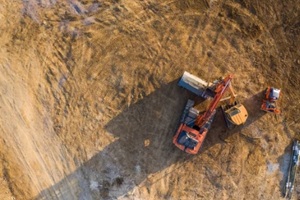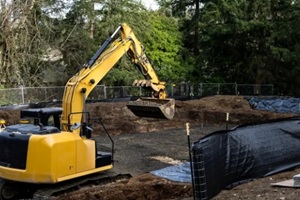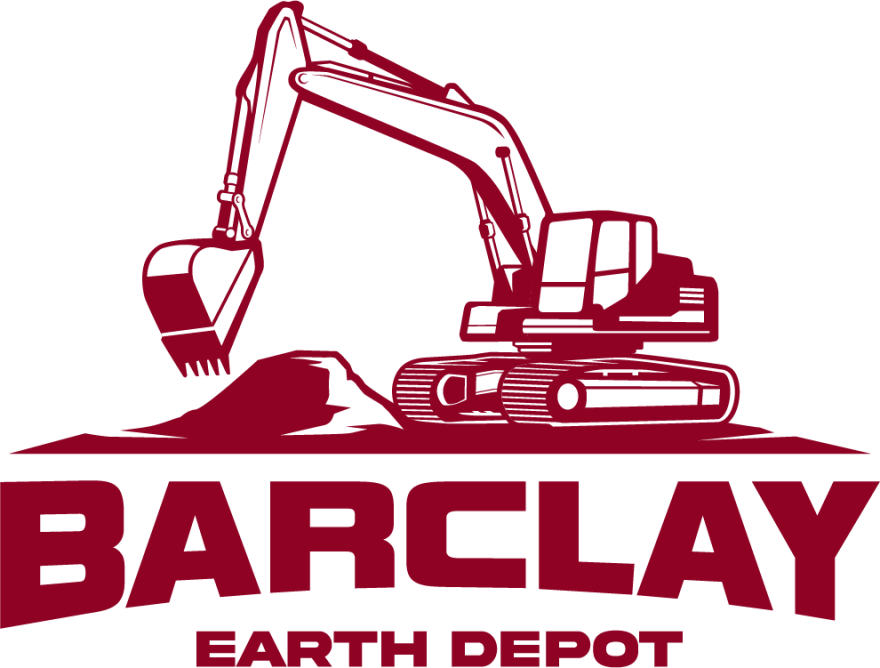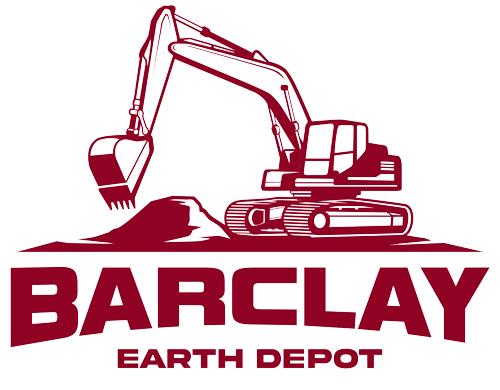 A stable foundation is essential for any construction project, from residential homes to commercial buildings and infrastructure. Settlement or shifting of the foundation can lead to various issues, such as cracks in walls and floors, misalignment of doors and windows, and leakage. One of the best ways to avoid foundation settlement issues is to properly use clean fill dirt during initial site preparation.
A stable foundation is essential for any construction project, from residential homes to commercial buildings and infrastructure. Settlement or shifting of the foundation can lead to various issues, such as cracks in walls and floors, misalignment of doors and windows, and leakage. One of the best ways to avoid foundation settlement issues is to properly use clean fill dirt during initial site preparation.
Comprehending what constitutes quality fill material and best practices for placement and compaction enables builders to establish highly stable bases that stand the test of time.
Causes of Foundation Settlement
Before looking at solutions and strategies, it helps to know the common culprits behind foundation movement:
- Soil compression: All soils compress to some degree under the weight of a structure. But compressed soil also regains loft, causing settlement. Poorly compacted backfill is especially problematic.
- Loose soils: Unstable sands, silts, clays, and fills present hazards due to susceptibility to vibration and water erosion.
- Water access: Saturation from groundwater, streams, flooding, or bad drainage produces a mucky base. Freezing and thawing cycles also undermine foundations over time.
- Tree roots: Roots can grow under shallow foundations, destabilizing the base as they expand.
- Site issues: Steep slope locations or previous inadequate fill work may fail to offer solid footing. Redevelopment sites also often have the poorest soils.
The Solution to Settling Is Quality Fill Dirt
Foundation settlement prevention starts with the proper fill dirt around foundation walls and beneath grade levels. Clean, quality-controlled structural fill dirt provides an essential and effective barrier against foundation movement.
Composition of Quality Fill
While any excess soil material may seem suitable for backfilling, not all dirt exhibits the ideal properties necessary to prevent settling issues. High-performance fill contains:
- Well-graded mix: A blend of particle sizes from fine silts and clays through larger aggregates creates a dense, interlocking fill. Too much of any one material causes issues.
- Optimal moisture content: The ideal amount of moisture enables excellent compaction but prevents saturation. Excessive water compromises stability even in well-graded mixes.
- Minimal organic content: Organic matter decays over time, causing voids; therefore, no more than minor topsoil traces should be present.
- Low plasticity: Too high a clay concentration produces gummy, expansive soil that is prone to cracking as water content fluctuates.
Since even quality on-site soils often fail to achieve this careful balance naturally, structural fill typically gets custom-designed and blended off-site to strict specifications under the guidance of geotechnical engineers. Reputable suppliers can provide testing documentation and materials-handling practices that establish consistent, ideal properties.
Compaction: Converting Fill Into a Solid Foundation

While utilizing the appropriate structural fill sets the stage for preventing settlement, proper installation and compaction methods realize that potential. Compaction converts loose fill into an incredibly dense, stable layer engineered to withstand structural loads.
Several interrelated factors influence compaction’s efficacy, including lift thickness, equipment used, and moisture levels. Ensuring compaction meets the highest standards requires methodical planning and controls.
Compaction Process Essentials
Effective structural fill compaction that resists settlement should incorporate:
- Thin lifts: Compacting thin layers instead of large volumes simultaneously provides superior density and uniformity.
- Optimal moisture level: Water helps particles stick together, but too much moisture prevents adequate compaction and causes future settling as excess evaporates.
- Heavy machinery: Only the heaviest rollers and compactors can impart enough compressive force to fully consolidate fill lifts.
- Testing: Engineers verify compaction between lifts, checking that the fill reaches at least 95% of standard Proctor density to validate structural stability.
When properly compacted using these proven techniques, structural fill becomes a powerful foundation buffer that resists shear stress and prevents expensive foundation failures.
Performance Benefits of Quality Fill
Utilizing clean, engineered fill and meticulous compaction delivers significant performance benefits, including:
- Prevention of foundation shifting and settling
- Reduced likelihood of cellar flooding or water seepage
- Superior structural integrity and load-bearing capacity
- Better surface drainage with proper site grading
- Enhanced lifespan of structures with a firm base
- Lower maintenance requirements long-term
Proper site preparation and base construction using quality-controlled fill ultimately help builders avoid the nightmare scenario of extensive foundation repairs. A focus on stability from day one translates to peace of mind and smart economics.
Best Fill Dirt Placement Practices
To fully realize fill dirt’s settlement prevention potential, ideal handling and placement methodology must be adhered to. Careful construction practices eliminate vulnerabilities such as erosion, saturation, and compaction gaps.
- Site preparation: Before placing fill, the existing soil should be stripped of topsoil, vegetation, and any unstable subsurface elements. The exposed ground then gets benched or scarified to bond layers.
- Perimeter drainage: Enveloping the site with swales, drains, and checks prevents flooding or moisture seepage that leads to saturation failure or loss of load-bearing capacity.
- Over-digging: Excavating additional space around essential load-bearing points, such as column footings, allows clean structural fill to provide necessary reinforcement.
- Lift schedule: Precise compaction of thin layers of fill allows maximum densification. A civil engineer provides specs based on soil and structural loads.
- Erosion prevention: Covering bare ground quickly with stabilization blankets, mulch, or fast-growing grasses curtails erosion between lifts that can undermine compaction integrity.
- Continuous testing: Technicians verify the compliance of each completed lift before additional fill gets placed, allowing mid-course corrections as needed.
When to Engage Geomaterial Professionals
Due to structural fill’s outsized impact on preventing foundation settlement, engaging qualified geomaterials professionals constitutes a wise investment. These professionals can assess site conditions, specify engineering parameters for materials and compaction, develop life cycle cost analysis, provide testing/inspection services, and recommend solutions customized to a project’s exclusive requirements. Their contributions enhance short and long-term building performance.
Access Premium Dirt Fill From Barclay Earth Depot
 Sourcing properly blended structural fill and managing associated logistics poses a sizable challenge for most builders or land developers. Rather than attempting to stage these processes in-house, turning to Barclay Earth Depot, an established geomaterials provider, streamlines the equation while providing assurance of fill dirt quality.
Sourcing properly blended structural fill and managing associated logistics poses a sizable challenge for most builders or land developers. Rather than attempting to stage these processes in-house, turning to Barclay Earth Depot, an established geomaterials provider, streamlines the equation while providing assurance of fill dirt quality.
With extensive technical expertise and strict quality testing regimens for every product, Barclay Earth Depot empowers builders to execute foundation and earthworks projects with confidence. Contact us today at (941) WE-DIG-IT or online for fill dirt solutions backed by proven performance.

